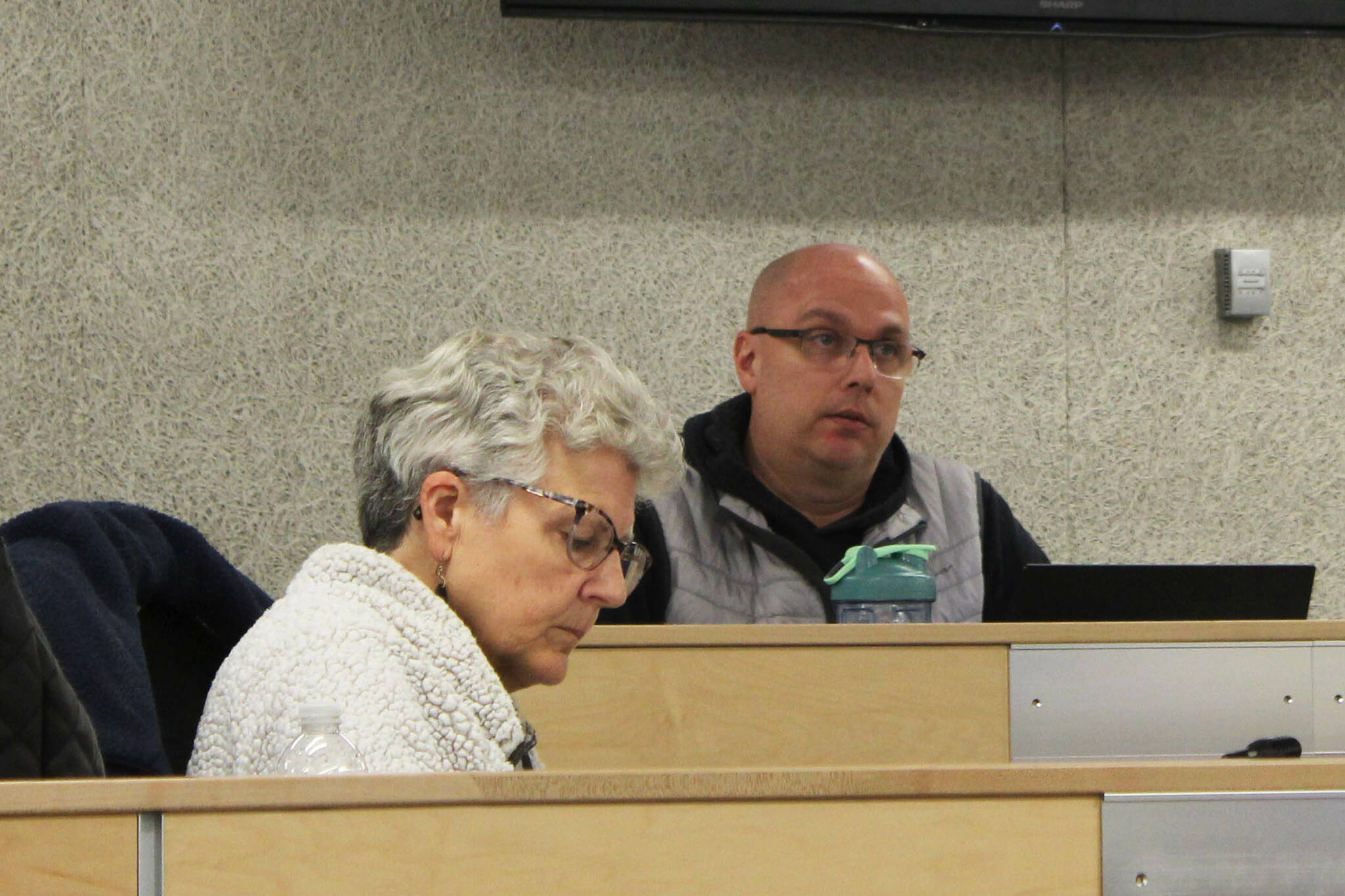Members of a newly minted Kenai Peninsula Borough School District group convened for the first time last week in Soldotna to refine their goals and purpose as a committee dedicated to studying a four-day school week model for the district.
KPBSD school board members last month created an ad hoc, or temporary, committee to be tasked with investigating and researching the benefits and challenges of implementing a four-day school week. Per the committee charge, the group will meet until July 2024 and then provide its findings to the full board.
Conversations on the topic started last summer with a school board work session during which board members mulled the pros and cons of the switch and brainstormed what implementation of the change would look like. A three-day weekend, for example, might attract new teachers, but may also force parents to find child care for the day they are still at work.
The group that met Wednesday includes Chair Jason Tauriainen, school board member Tim Daugharty, KPBSD Director of Secondary Education Tony Graham, Human Resources Director Nate Crabtree, Kenai Peninsula Education Association President LaDawn Druce, Kenai Peninsula Educational Support Association President Susanna Litwiniak and Kenai Peninsula Administrators Association President Pete Swanson.
Crabtree kicked off the discussion by seeking clarification on whether, by “four-day school week,” committee members would be talking about a four-day week for students, for staff, or for both. Tauriainen said he envisioned a hybrid model, whereby students would attend school four days per week and then staff would be able to flex their work hours.
“I don’t want to really limit us at this point,” Tauriainen said. “I think we need to be a little bit open, but my general concept is it’s a four-day work week, -ish.”
Crabtree said he, Druce and Litwiniak are bringing a staff-centered approach to the conversation and that it will be important to clearly outline what the expectations of district employees will be.
“There’s no ‘ish’ in our collective bargaining agreements,” Crabtree said.
Druce had similar thoughts and said teachers often spend part of their days off working under the five-day school week model. She expects the same would be true even if KPBSD were to move to a four-day school week.
“I can’t hardly fathom how teachers cannot work some part of that fifth day,” she said.
There are different ways for staff and students to make up the instruction time that would ordinarily be delivered on the fifth school day, Tauriainen said, such as by making the other four instruction days longer or by adding days to the end of the school year.
Committee members said they could also look at models used by other districts to see what works and what could be improved. As reported by the Anchorage Daily News, Alaska’s Southeast Island School District, which serves 146 students, shifted to a four-day school week model in 2013.
Tauriainen suggested that committee members divvy up and research the guiding questions prior to the group’s next meeting. Those questions include what the impact would be on KPBSD costs, student and staff quality of life, student attendance, contract negotiations with staff unions, the community and student outcomes.
The committee is next expected to meet in mid-February. KPBSD meeting notices and other documents are published on the district’s BoardDocs page.
Reach reporter Ashlyn O’Hara at ashlyn.ohara@peninsulaclarion.com.


